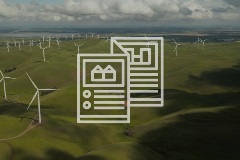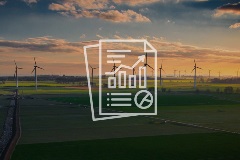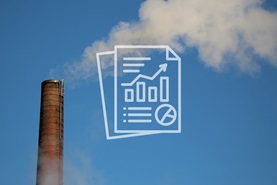What are the Key Themes Driving Investor Climate Reporting?
In the context of the climate crisis, investors need insightful climate research, ratings, and data. Investors must balance the physical risks of climate change alongside the transition risks of moving to a net-zero economy.
In particular, regulatory guidance like the Task Force on Climate-related Financial Disclosures (TCFD) has placed urgency on the investment community to take a more active role to address global climate change. The TCFD framework is becoming increasingly important as it is shifting from a voluntary approach to being the main global regulatory response to climate risk, with many regions now mandating it for compulsory climate reporting.
Featured Content

eBook | Managing Risks for a Changing Climate: A Guide for Institutional Investors
Is your organization planning on or has committed to aligning portfolios to a net-zero pathway and must report on decarbonization efforts? Read our latest ebook for insights into the investment and portfolio risks related to physical climate hazards and the transition to a low carbon economy.
Climate Content
Our Solutions
Morningstar Sustainalytics’ Climate Solutions enable investors to effectively evaluate both transition and physical climate risks. Our products can help investors build comprehensive climate investment strategies, fulfill disclosure requirements, advance engagement activities, and evaluate climate risks.

Physical Climate Risk Metrics
Assess and disclose the direct and indirect physical climate risks of climate change related exposure.
Learn More
Low Carbon Transition Ratings
Receive a forward-looking assessment of a company’s current alignment to a net-zero pathway.
Learn More
Carbon Emissions Data
Evaluate and analyze companies’ GHG emissions across scope 1, 2, and 3 emissions.
Learn MoreAdditional Resources
Net-Zero Transition
Low Carbon Transition Ratings from Morningstar Sustainalytics
In the context of the climate crisis, investors need robust research, data, and tools to identify and manage the climate transition-related risks and opportunities of their portfolio companies. Morningstar Sustainalytics’ Climate Solutions team created the Low Carbon Transition Ratings (LCTR), a new flagship ratings product, to help investors do just that.
Low Carbon Transition Ratings Methodology
Leveraging our Low Carbon Transition Ratings, investors can respond to regulatory initiatives, implement net-zero strategies, fulfill client net-zero mandates and obtain transparency into company actions by integrating climate research into their investment decision-making processes.
Physical Climate Risks and Carbon Emissions
Brochure | Physical Climate Risk Metrics
As climate change challenges the modern investment landscape, evolving marketplace expectations will require investors to disclose both transition and physical climate risks associated with their investments. To help investors better understand their exposure to physical climate risks, Sustainalytics, in collaboration with XDI, an award-winning global leader in physical climate risk analysis, are introducing Physical Climate Risk Metrics (PCRM) as Sustainalytics’ first Physical Climate Risk offering to align with evolving reporting needs. XDI's analysis supports decision-making in finance, business, and governments worldwide, with detailed, investment-ready information for physical climate risk.
















